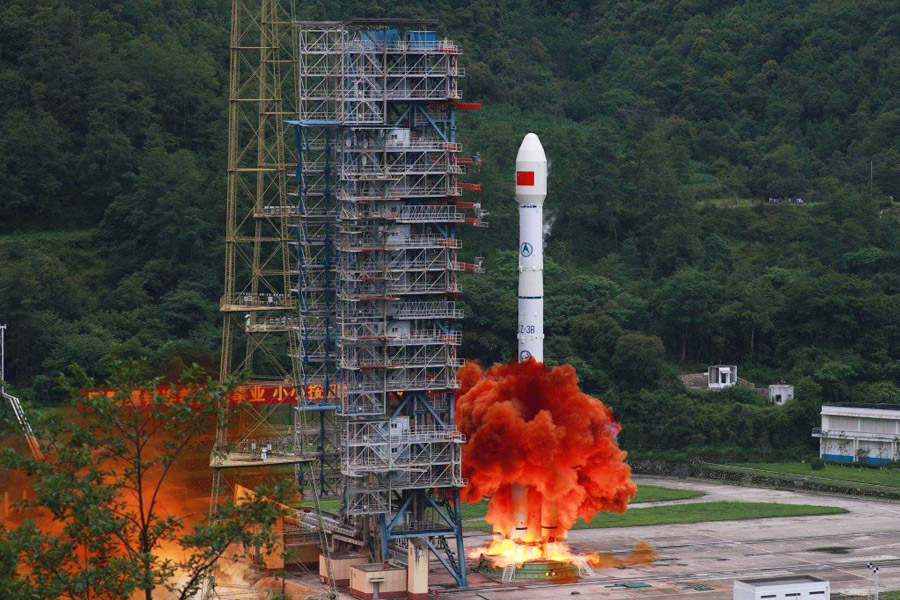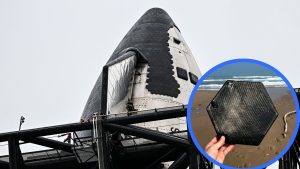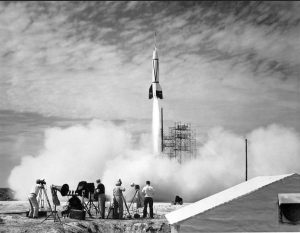What do we know about Chinese satellites?
24th Sep 2022
The Chinese space agency rarely collaborates with NASA and ESA on international missions. However, the Chinese space industry is developing at a rapid pace. China now has its space station and so far, the only country that has more active satellites than China is the USA. But what do we know about Chinese satellites? Can it be that a 21st-century space race is heating up? Let’s try to find out.
Does China have its own satellites?
China ranks second worldwide when it comes to the number of satellites launched. This is mostly because it has a full-cycle capability, meaning that Chinese satellites are manufactured locally and launched into space on Chinese rockets from Chinese launch sites.
The first Chinese satellite launch took place in 1970, but the country’s launch capability ballooned in the 2010s and keeps on growing. Statista reports that as of January 1, 2022, there were 499 Chinese satellites in orbit, but more recent sources indicate 562 as of September 2022 — a number that has grown exponentially in the last decade alone. With four Chinese launch sites, its heavy Long March rockets, and a steady launch schedule, we can expect this number to grow even further. But what kind of satellites do the Chinese launch?
Does China have spy satellites?
Here, it’s important to understand that most imaging satellites, including spacecraft for Earth observation, can ‘spy’, so it’s usually a matter of how each country classifies its spacecraft. China has a series of satellites for Earth observation, such as Yaogan and Gaofen. On 2 September, China launched Yaogan-33, which NASA believes to be a potential spy. Besides, there are dedicated Chinese satellites for reconnaissance, Fanhui Shi Weixing and Ziyuan. However, since China does not partner up with other countries to build spacecraft, it is not always possible to determine the function of every satellite launched. However, in April 2022, Chinese researchers did unveil that they are using advanced AI systems that can potentially turn commercial satellites into spy platforms.
Does China have its own GPS satellites?
The Chinese satellite navigation system is called BeiDou. It is one of the most advanced global positioning systems and has a total of 44 satellites. Since 2018, it has been proving global services, and by the time of the system’s completion in 2020, it reached an accuracy of 1 m for public use and 1 cm for the military. Today, the BeiDou Chinese satellite tracker is one of the most advanced systems for rescue as well because it can get data from compatible devices and send it directly to Chinese satellites. According to Chinese official channels, this functionality is aimed at boats, rescuers, and field staff who only need to send an SMS to inform about their precise location. Like most other Chinese space systems, BeiDou implies complete autonomy from other navigation services, allowing China fully independent access to information about global transportation on land and at sea. Until recently, BeiDou was China’s largest space project. However, in 2019, China became massively involved in a lunar exploration program of its own, which seems to be the current focus for the Chinese space industry.
What is the Chinese lunar satellite called?
The Chinese Lunar Exploration Program includes four stages. The first one called for merely reaching lunar orbit, but the fourth aims to build a station near the Moon’s South Pole. In January 2019, China successfully landed its robotic probe on the lunar surface. Communication with ground stations on Earth is made possible thanks to the Longjiang-2 relay lunar satellite — one of two Chinese spacecraft from the same series to reach lunar orbit in 2019. Considering this program’s pace, it is quite probable that China will accomplish a manned landing by 2030 and will start building its station on the Moon.
How big are Chinese satellites?
Today’s satellites vary considerably in size and functionality, and with modern technological advancement, these two no longer in directly correlate to each other. So far, the US is the leading country when it comes to the number of payloads deployed. For example, the US deployed 1,763 payloads between 1992 and 2019, while China only launched 480 over the same period. This February, however, the country did set a domestic record of payloads deployed in one launch when it sent 22 satellites at once onboard a Long March 8 rocket. Most of these spacecraft were around 3 meters in diameter. But does it mean that China may be catching up with the US when it comes to the number of satellites in orbit? Well, not just yet.
Does China have more satellites than the US?
No. The US remains the leader when it comes to the number of satellites launched, with 2,800+ active satellites as of January 2020 and 5,000+ as of September 2020. The second spot belongs to China, with its 499 satellites at the beginning of the year and 562 in September. China is then followed by the UK, Russia, Japan, and India. So, while Chinese satellites are the second most numerous satellites in obits, the gap between China and the US is still large. Besides, considering the number of launches, it looks like the United States will remain the undisputed leader for quite some time. But then again — today’s space tech is not just about numbers. Can the Chinese growing space ambitions become a danger to Western countries?
Can Chinese satellites become a threat?
Such an impressive and, more importantly, fully independent launch capability raises concerns, especially considering advanced Chinese satellite tracking capacities. Analysts raised the alarm after a Chinese satellite pulled another spacecraft and transitioned it to a graveyard orbit. The removed satellite in this case was a defunct Chinese BeiDou. However, space experts worldwide started asking whether this technology demonstration could be a test for an upcoming Chinese satellite killer. Others asked if this was some sort of space debris removal procedure.
One thing is certain: the rising amount of space junk from the ever-increasing amount of spacecraft in orbit. Events such as the Chinese satellite crash in 2021 don’t help. In this case, the rocket went out of control and fell back to Earth pose a very tangible danger.
Space Debris and Solutions
In all fairness, China is not the only country to experience setbacks with its rocket launches. Moreover, when the debris from the failed Long March5B rocket fell back to Earth, no one got hurt. But there is still a problem of space debris that could potentially may our orbits impassable. This is an issue actively analyzed by NASA, ESA, and private aerospace companies worldwide. Considering that China has the second-largest number of spacecraft in orbit, it may be necessary to come up with more permanent measures than changing a Chinese satellite’s trajectory and sending defunct spacecraft into graveyard orbits. Such an approach does not fully address the problem but rather postpones its permanent solution. In other words, the Chinese space cleaner satellite that caused such an uproar did not really clean up anything. The BeiDou in question was simply moved farther from our planet. But, as space missions keep rising, we may need a more permanent solution than simply relocating spacecraft.
Another pressing issue is China’s recent announcements to destroy Starlink satellites if they are used for military purposes. While Chinese scientists admit that destroying such a large constellation will not be easy, the proposal itself is alarming. It is not yet clear whether China’s Relativistic Klystron Amplifier (RKA) microwave machine will, in fact, shoot down other spacecraft. It’s existence, though, already poses a threat to other national spacecraft.
List of Chinese satellites
On 2nd September, China launched its 33rd Yaogan series spy satellite. They claimed that the spacecraft is a remote sensing EOS satellite. However, very little is known about this new tech, which raises certain concerns, especially if we consider today’s political tensions, Chinese claims towards Taiwan and its threats against Starlink.
Also, China’s approach to tackling the problem of space debris by shifting defunct satellites into graveyard orbit is barely enough these days when so many countries and private companies deploy their satellites on a regular basis. The ever-growing amount of space debris poses a threat to currently operational spacecraft and could even make LEO impassable in the long run. As already mentioned, cleaning out our orbits calls for a more permanent solution than sweeping the trash under the carpet, as China does — especially considering just how much Chinese satellite debris we are talking about in the long run.
You can check out the full list 500+ Chinese satellites here. Below, we will only list the top Chinese satellites, generally coming in a series of numbered spacecraft.
- BeiDou, a constellation of 44 navigation satellites
- Apstar, communication
- Chinasat, communication
- Gaofen, EOS
- Yaogan, EOS
- GaoJing, advanced Chinese satellite imagery tech
- Fanhui Shi Weixing, reconnaissance
- Ziyuan 3-01, reconnaissance
- Wukong, aka DAMPE (Dark Matter Particle Explorer), telescope satellite
- Pujiang-1, tech demonstration for smart city construction






Thank you for your comment! It will be visible on the site after moderation.